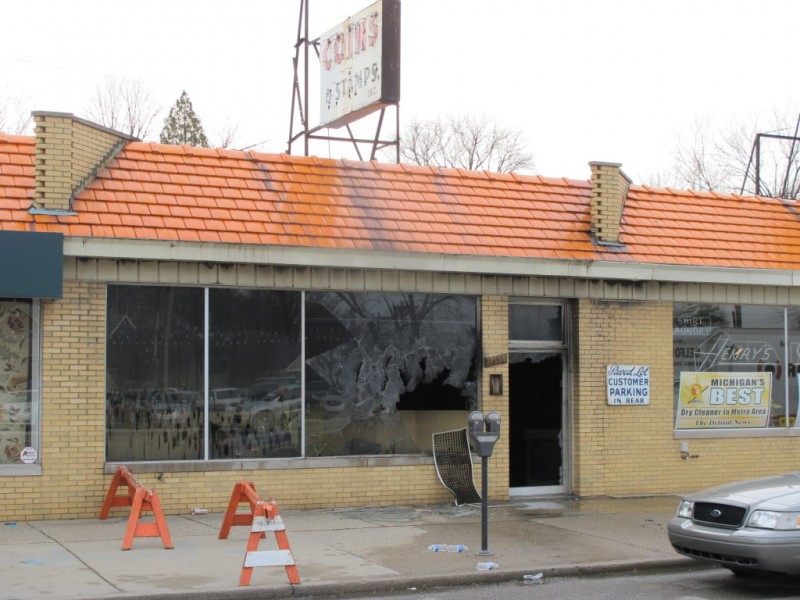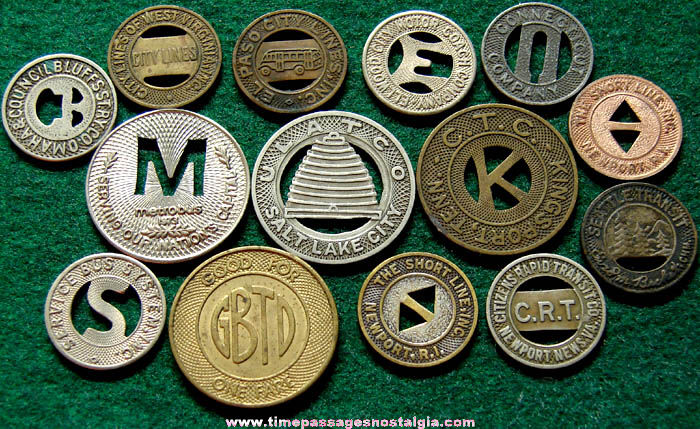 Then, the 3 attempted robberies and the fire bombing of Coins and Stamps in Grosse Pointe, Michigan in 2012. Now, not to be bias, Coins and Stamps is and always will be my home away from home; as I was awarded the privilege to see the hidden treasures of the store; even had a book that held my wish list of coins I was going to buy in the future when the funds where available. I remember placing a call to Jamie and Mine the morning of the fire to find out if they were OK and check on the condition of the store. I asked about the box and was told it was fine and the inventory was still in it; however, it now was lumped together on the floor. This store lost so much Detroit history items it still makes me want to cry. Today, the store has been rebuilt and business is booming and everything is bright and new, I just miss the musty old smell of history.
Then, the 3 attempted robberies and the fire bombing of Coins and Stamps in Grosse Pointe, Michigan in 2012. Now, not to be bias, Coins and Stamps is and always will be my home away from home; as I was awarded the privilege to see the hidden treasures of the store; even had a book that held my wish list of coins I was going to buy in the future when the funds where available. I remember placing a call to Jamie and Mine the morning of the fire to find out if they were OK and check on the condition of the store. I asked about the box and was told it was fine and the inventory was still in it; however, it now was lumped together on the floor. This store lost so much Detroit history items it still makes me want to cry. Today, the store has been rebuilt and business is booming and everything is bright and new, I just miss the musty old smell of history.But, there are two (2) coin robberies you'll never hear about in public as they are just to embarrassing to the parties involved. The first starts with a modest coin store in Michigan. The manager of the store was a well-known and educated numismatist among collector's and seller's. One day in the late 1980's a customer came into the shop; a poised well dressed suit and tie kinda guy. After making small talk he purchased several inexpensive coins and left. Over the coarse of the year the man returned often, even bringing the store manager a morning coffee and box of donuts. The two became quite close and a prevailing trust was exchanged as the man watched the counter when the manager who worked by himself needed a bathroom break. This went on for a couple of years when the 1980's turned into the 1990's.
In the summer of 1991, the gentleman made his usual stop at the store with coffee and donuts, and the usual conversation began between the men. Suddenly, the store manager felt as if he was going to pass out, even asking the customer for help, which he seemed to give with out question, even helping the manager to the office in the backroom, where he was sat in his chair. The manager awoke six (6) hours later to find the store closed, lights off and the doors locked. Also noticed was that the store was empty of all of it's coins, jewelry and valuable trinkets. Now, when I say everything was gone, even the trays that held the coins were taken, and a valuable collection of art work was missing off the walls.
 The police were called, the manager re-counted that one of his favorite customer's was there and then everything was a blank; transported to be examined at a hospital, the manager learned he had been drugged with a tranquilizer which induced sleep. He slept through the robbery as the customer was seen loading his car in the back of the store for almost an hour. The police investigation revealed that the customer under the name he went by did not exist, didn't have any known address and the car he used was stolen. Fast forward to a coin show held in 1992 in California, the store manager was in attendance, where just by chance he caught the familiar features of a patron trying to sell coins to a dealer; yep, you guessed it, it was the mystery customer trying to off-load coins from the robbery. The police were called and he was caught, less than 25% of the loot were recovered. The lesson learned, stay away from the coffee, and not everyone is a friend...
The police were called, the manager re-counted that one of his favorite customer's was there and then everything was a blank; transported to be examined at a hospital, the manager learned he had been drugged with a tranquilizer which induced sleep. He slept through the robbery as the customer was seen loading his car in the back of the store for almost an hour. The police investigation revealed that the customer under the name he went by did not exist, didn't have any known address and the car he used was stolen. Fast forward to a coin show held in 1992 in California, the store manager was in attendance, where just by chance he caught the familiar features of a patron trying to sell coins to a dealer; yep, you guessed it, it was the mystery customer trying to off-load coins from the robbery. The police were called and he was caught, less than 25% of the loot were recovered. The lesson learned, stay away from the coffee, and not everyone is a friend... I promised you two (2) robbery stories, the 2nd a little shorter but most ironic then the first; as I refereed to the store's manager, not owner. As the true owner was busy traveling collecting coins and other objects or tending to his other investments. Fast forward to the mid 2000's when the store manager drops dead from medical problems. The owner hires a new manager to replace his friend, employee and trusted confidant of so many years. Only to discover that the former managers family has just sent a batch of coins to an auction house to be sold. Only problem, the coins sent in where the rarest of the rare pieces like The "New England Shilling" and the Massachusetts 1652 Twelve Pence as examples.
I promised you two (2) robbery stories, the 2nd a little shorter but most ironic then the first; as I refereed to the store's manager, not owner. As the true owner was busy traveling collecting coins and other objects or tending to his other investments. Fast forward to the mid 2000's when the store manager drops dead from medical problems. The owner hires a new manager to replace his friend, employee and trusted confidant of so many years. Only to discover that the former managers family has just sent a batch of coins to an auction house to be sold. Only problem, the coins sent in where the rarest of the rare pieces like The "New England Shilling" and the Massachusetts 1652 Twelve Pence as examples.Now you could say the former store manager was an astute collector, however he did not have the means to collect several million dollars of rare coins, and not have a pot to piss in outside the coin world. As it seems the former manager was living two life's; one as a noted numismatist; the other as a thieving drunk who was a crappy gambler, all done on other people's money. The manager's family relinquished ownership of the coins to avoid prosecution and to save face of the dead.
So that's my tales and I am sticking to them; just remember in the coin business, it pays to keep both eyes open.
CJC












